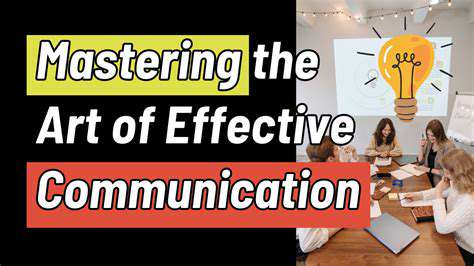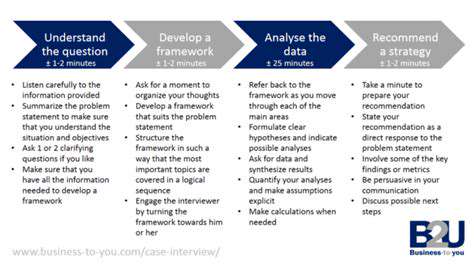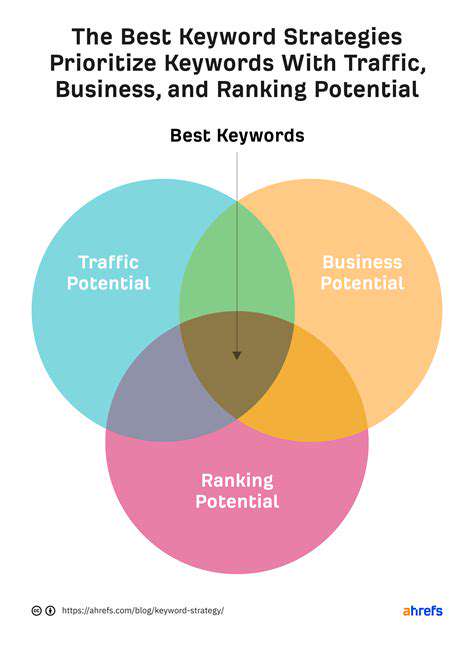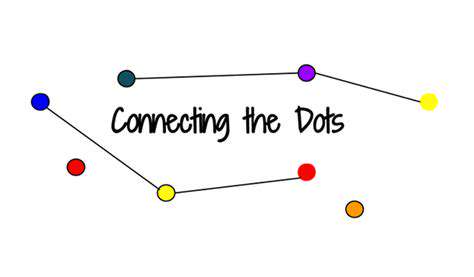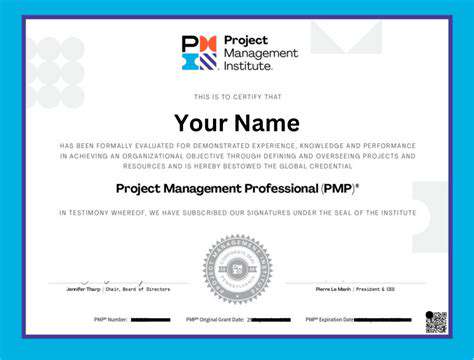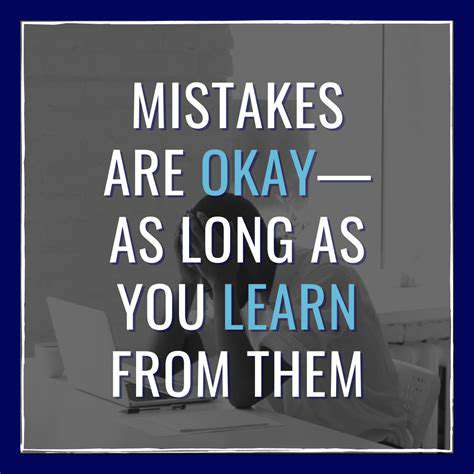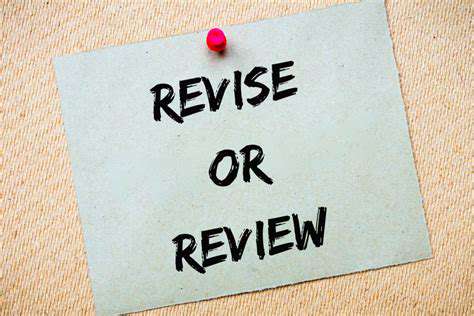Guide to Setting Professional Goals
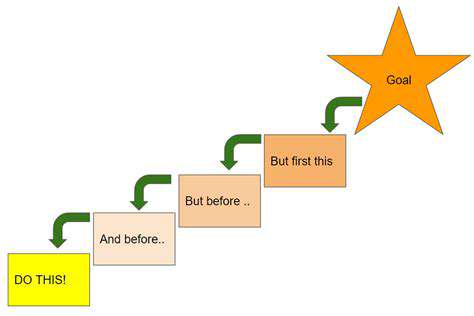
Defining the Scope of the Project
When tackling a major project, the first step is to clearly outline its boundaries and deliverables. This means pinpointing exactly what needs to be accomplished, determining how success will be measured, and setting concrete expectations. A well-crafted scope statement serves as your project's North Star, keeping all team members aligned and focused on the same targets. Without this clarity, projects often suffer from scope creep - that insidious expansion of work that can derail timelines and budgets.
Taking time upfront to understand the full picture leads to more accurate estimates for time, money, and staffing needs. This foundational work pays dividends throughout the project's lifecycle.
Breaking Down into Smaller Tasks
Massive objectives can feel paralyzing, but slicing them into bite-sized pieces makes them suddenly manageable. This task decomposition creates natural checkpoints where you can celebrate progress and maintain momentum. The real art lies in sequencing these tasks logically - considering which steps depend on others and which can run in parallel. This thoughtful structuring prevents that overwhelmed feeling when staring at a mountain of work.
Each mini-task deserves its own clear definition and deadline. This granular approach transforms vague aspirations into concrete to-dos you can actually schedule and track.
Setting Realistic Deadlines
Time estimates can make or break a project. Overly optimistic deadlines create unnecessary stress, often resulting in rushed work and compromised quality. The smarter approach involves honest assessments of each task's complexity, plus buffer time for the unexpected. Realistic timelines create a virtuous cycle of achievement and motivation.
Smart planners also account for external variables - team availability, vendor lead times, seasonal fluctuations. Building in flexibility means you can adapt without derailing the entire project.
Allocating Resources Effectively
Resource planning separates the amateurs from the pros. Matching the right people to the right tasks - with the proper tools at their disposal - creates an environment where work flows smoothly. This means understanding both the technical requirements and the human elements - who has which skills, who works well together, who needs development opportunities.
The best resource plans consider not just what's needed, but when it's needed. Phased resource allocation prevents bottlenecks while avoiding underutilization.
Establishing Communication Channels
Even the best plan fails without clear communication. Setting up structured touchpoints - regular standups, progress dashboards, escalation paths - keeps everyone informed and engaged. When issues arise (and they always do), established channels mean they get addressed quickly.
The most successful teams build communication into their workflow, not as an afterthought. This proactive approach prevents small misunderstandings from becoming major roadblocks.
Monitoring Progress and Making Adjustments
Regular check-ins serve as your project's vital signs. Tracking against milestones reveals what's on track and what needs course correction. The key is catching variances early - when adjustments are small and inexpensive to implement. This monitoring rhythm creates natural opportunities to celebrate wins and troubleshoot challenges.
Flexibility distinguishes good project managers from great ones. Being willing to pivot - whether on timelines, approaches, or resource allocation - keeps projects moving forward despite inevitable surprises.
Celebrating Milestones and Learning from Experiences
Recognition fuels motivation. Taking time to acknowledge completed phases - even small wins - reinforces positive behaviors and builds team cohesion. These celebrations create emotional markers that help teams reflect on how far they've come.
The project's end offers its own value through retrospective analysis. Examining what worked and what didn't transforms experience into institutional knowledge. These lessons become the foundation for even greater success on future initiatives.
Developing a Robust Action Plan: Strategies for Success
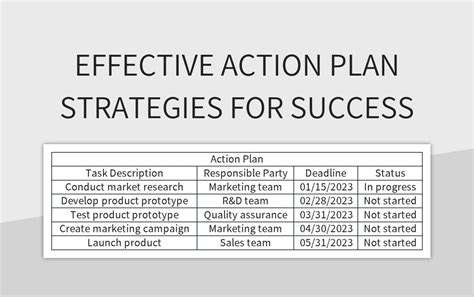
Defining the Scope and Objectives
Every great action plan starts with crystal-clear boundaries. Precisely delineating what's in scope - and equally important, what's not - prevents mission creep and keeps efforts focused. This clarity extends to success metrics - the specific, measurable outcomes that will demonstrate achievement.
The SMART framework transforms vague aspirations into actionable targets. Each objective should pass the test: Is it Specific? Measurable? Achievable? Relevant? Time-bound? This rigor at the planning stage pays off in execution.
Identifying Key Stakeholders
Projects exist in ecosystems of interested parties. Mapping these stakeholders - from decision-makers to end-users - reveals who needs consultation, who requires updates, and who can provide support. This analysis often uncovers unexpected allies or potential roadblocks.
Effective stakeholder management means tailoring communication to each group's needs and influence. Some need detailed reports; others just high-level summaries. Getting this right builds crucial support networks.
Resource Allocation and Management
The difference between a plan and a fantasy often comes down to resource realism. Detailed resource mapping - people, equipment, budget - exposes gaps before they become crises. This includes not just what's needed, but when and for how long.
Contingency planning transforms potential disasters into manageable bumps. Identifying backup resources and alternative approaches creates resilience when (not if) surprises occur.
Developing Actionable Steps
Abstract goals become concrete through decomposition. The magic happens when each major deliverable breaks down into discrete tasks with clear ownership and deadlines. This work breakdown structure creates natural accountability and progress tracking.
Prioritization is equally crucial. Understanding task dependencies reveals the critical path - that sequence of activities that directly impacts the timeline. Focusing here prevents downstream delays.
Establishing Communication Channels
Information flow makes or breaks execution. Designing communication protocols - what gets shared, when, through which channels, to whom - prevents both information overload and dangerous knowledge gaps. The best systems balance structure with flexibility.
Regular rhythm meetings (daily standups, weekly check-ins) create predictable touchpoints, while ad-hoc channels handle urgent issues. This dual approach keeps everyone aligned without unnecessary meetings.
Monitoring and Evaluation
What gets measured gets managed - and what gets reviewed gets improved. Building evaluation checkpoints into the plan creates opportunities for course correction before small issues become big problems.
Effective metrics balance leading indicators (predictive measures) with lagging indicators (outcome measures). This combination provides both early warning signals and ultimate success criteria.
Contingency Planning
The only certainty is uncertainty. Smart planners identify likely risks (and some unlikely ones) and develop preemptive responses. This isn't pessimism - it's practical preparedness that enables rapid response when challenges arise.
Scenario planning takes this further, playing out what if situations to test plan robustness. These mental rehearsals make real crises feel more manageable when they occur.
Medication adherence plays a pivotal role in chronic disease management. Consistent compliance with prescribed treatments significantly improves health outcomes and quality of life for patients.
Maintaining Momentum and Adapting to Changes: Long-Term Career Planning
Setting Realistic Goals and Maintaining Motivation
Career success rarely comes from one giant leap, but rather many small, intentional steps. The key lies in chunking large ambitions into manageable quarterly objectives with clear success metrics. This approach creates a rhythm of achievement that sustains motivation over years, not weeks. Regular career checkups allow for course corrections as industries evolve and personal priorities shift.
The most fulfilled professionals build celebration into their growth process - acknowledging skill milestones, project completions, and even valuable failures. Seeking diverse mentors provides perspective during challenging periods, while continuous learning ensures skills stay relevant in changing markets. Ultimately, career longevity stems from this balance of structure and adaptability.
Adapting to Change and Embracing New Opportunities
Today's workplace rewards agility. Professionals who thrive view industry disruptions not as threats but invitations to grow. This mindset shift - from how does this affect me? to how can I leverage this? - opens unexpected doors. The most successful career navigators develop antennae for emerging trends, allowing them to pivot before change becomes necessity.
Strategic networking creates both safety nets and springboards. These relationships provide early warnings about shifting landscapes while uncovering unadvertised opportunities. Equally important is honest self-assessment - regularly evaluating which skills to deepen, which to acquire, and which to sunset.
Volunteering for stretch assignments, cross-functional projects, or industry initiatives builds both experience and visibility. Each new challenge expands your professional toolkit while demonstrating adaptability to current and future employers. In our rapidly evolving work world, the most valuable career plan isn't a rigid map, but a compass pointing toward continuous growth.
Read more about Guide to Setting Professional Goals
Hot Recommendations
- How to Stay Productive While Working Remotely
- Tips for Managing Conflict with Coworkers
- Entrance & Certification Exams (升学考试)
- How to Improve Your Storytelling Skills (Speaking)
- How to Find Profitable Side Hustles
- Tips for Preparing for the TOEFL iBT Home Edition
- Guide to Switching Careers from [Industry A] to [Industry B]
- How to Run an Effective Hybrid Meeting
- Tips for Marketing Your Side Hustle on Instagram
